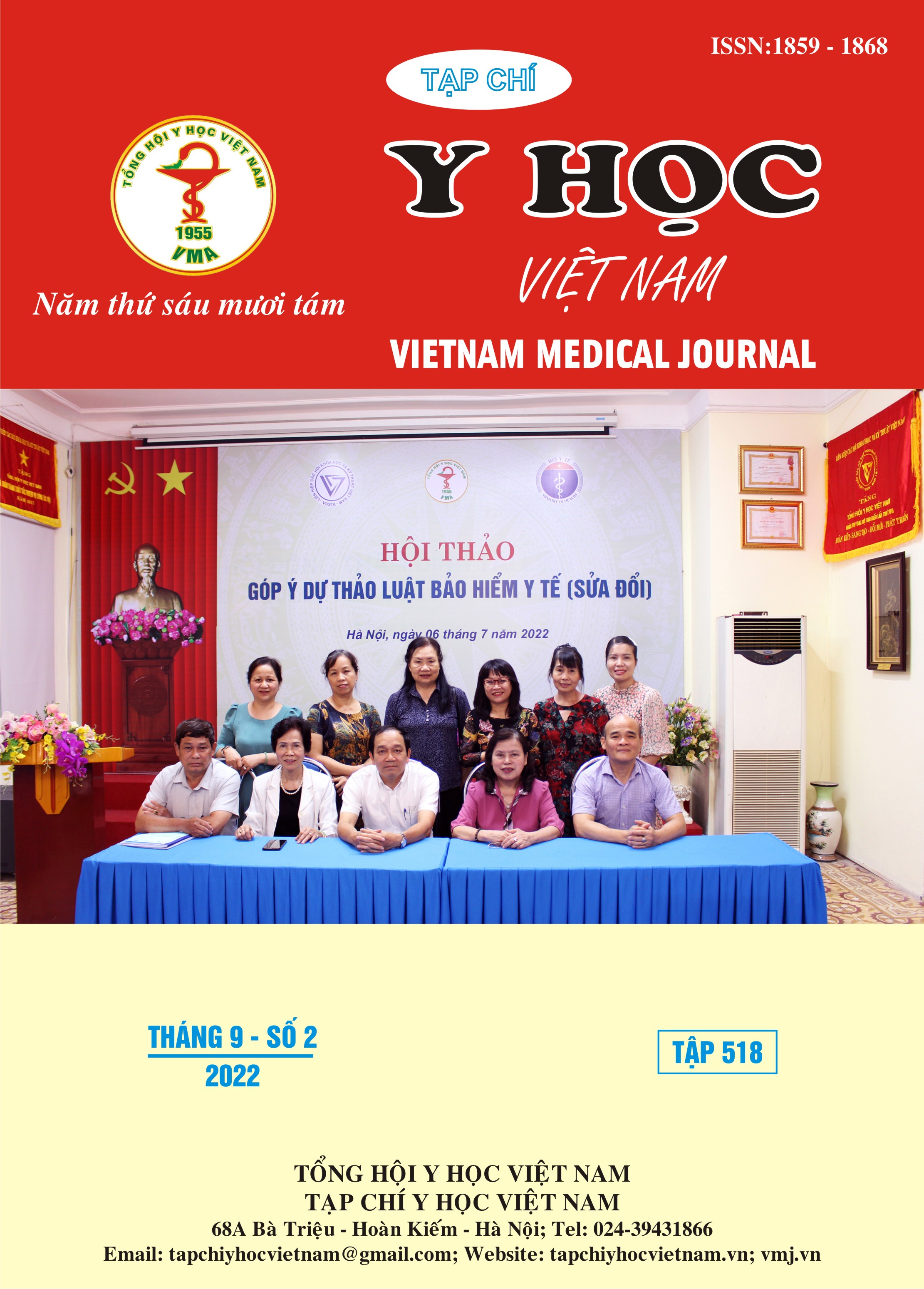ĐẶC ĐIỂM BỆNH LÍ THAI TRỨNG XÂM LẤN TẠI BỆNH VIỆN TỪ DŨ
Nội dung chính của bài viết
Tóm tắt
Đặt vấn đề: Thai trứng xâm lấn (TTXL) là bệnh thuộc tân sinh nguyên bào nuôi thai kì (TSNBNTK), một trong số ít những bệnh lý ác tính có thể điều trị khỏi, thậm chí khi bệnh diễn tiến đến giai đoạn xa hơn, có di căn ở cơ quan khác. Phẫu thuật cắt tử cung mặc dù không phổ biến nhưng cũng là phương pháp xem xét điều trị ban đầu cho những bệnh nhân TSNBNTK chưa di căn và không còn mong muốn có thêm con hoặc kháng hóa trị. Mục Tiêu: Xác định tỷ suất cần phải hóa trị cứu vãn sau phẫu thuật cắt tử cung ở trường hợp TTXL và yếu tố liên quan. Phương pháp: Nghiên cứu đoàn hệ hồi cứu. Lấy mẫu toàn bộ các trường hợp có kết quả giải phẫu bệnh (GPB) là TTXL tại bệnh viện Từ Dũ từ 1/2016 – 12/2020. Kết quả: Sau 12 tháng theo dõi kể từ thời điểm phẫu thuật cắt tử cung có 47 trường hợp cần hóa trị cứu vãn. Tỷ suất này là 24.87% (KTC 95%: 18.88-31.66). Áp dụng mô hình phân tích đa biến, nồng độ β-hCG 2 tuần sau phẫu thuật > 1900 mIU/mL (HR = 4.30, KTC 95%: 2.08-8.87) và hóa dự phòng sau hút nạo thai trứng (HR = 2.75, KTC 95%: 1.20-6.30) làm tăng nguy cơ áp dụng hóa trị cứu vãn. Hóa trị hỗ trợ sau phẫu thuật làm giảm nguy cơ (HR = 0.43, KTC 95%: 0.22-0.83). Kết luận: Mặc dù tất cả các trường hợp đều được phẫu thuật cắt tử cung toàn phần, 24.87% bệnh nhân cần thêm hóa trị cứu vãn để đạt lui bệnh. Điều này cho thấy tính chất ác tính của bệnh lí TTXL, không đơn thuần là sự xâm lấn tại chỗ của tế bào nuôi. Hóa trị hỗ trợ ngay sau cắt tử cung đóng vai trò quan trọng trong giảm tỷ lệ cần phải hóa trị cứu vãn.
Chi tiết bài viết
Từ khóa
thai trứng xâm lấn, tân sinh nguyên bào nuôi thai kì, phẫu thuật cắt tử cung, hóa trị hỗ trợ, hóa trị cứu vãn
Tài liệu tham khảo
2. Rim Batti, Amina Mokrani, Haifa Rachdi, Henda Raies, Omar Touhami, et al. (2019), "Gestational trophoblastic neoplasia: experience at Salah Azaiez Institute". The Pan African medical journal, 33, pp. 121-121.
3. Pierre-Adrien Bolze, Mélodie Mathe, Touria Hajri, Benoit You, Yohann Dabi, et al. (2018), "First-line hysterectomy for women with low-risk non-metastatic gestational trophoblastic neoplasia no longer wishing to conceive". Gynecologic Oncology, 150 (2), pp. 282-287.
4. R. M. Clark, N. S. Nevadunsky, S. Ghosh, D. P. Goldstein, R. S. Berkowitz (2010), "The evolving role of hysterectomy in gestational trophoblastic neoplasia at the New England Trophoblastic Disease Center". J Reprod Med, 55 (5-6), pp. 194-8.
5. V. Giorgione, A. Bergamini, R. Cioffi, F. Pella, E. Rabaiotti, et al. (2017), "Role of Surgery in the Management of Hydatidiform Mole in Elderly Patients: A Single-Center Clinical Experience". Int J Gynecol Cancer, 27 (3), pp. 550-553.
6. H. Y. S. Ngan, M. J. Seckl, R. S. Berkowitz, Y. Xiang, F. Golfier, et al. (2021), "Diagnosis and management of gestational trophoblastic disease: 2021 update". Int J Gynaecol Obstet, 155 Suppl 1, pp. 86-93.
7. P. Zhao, Y. Lu, W. Huang, B. Tong, W. Lu (2019), "Total hysterectomy versus uterine evacuation for preventing post-molar gestational trophoblastic neoplasia in patients who are at least 40 years old: a systematic review and meta-analysis". BMC Cancer, 19 (1), pp. 13.
8. Vo Minh Tuan, Phan Nguyen Nhat Le (2019), "First Line Mono-Chemotherapy using Methotrexate in Post-Molar Patients with Gestational Trophoblastic Neoplasia". Gynecol Reprod Health, 3 (2), pp. 1-5.


